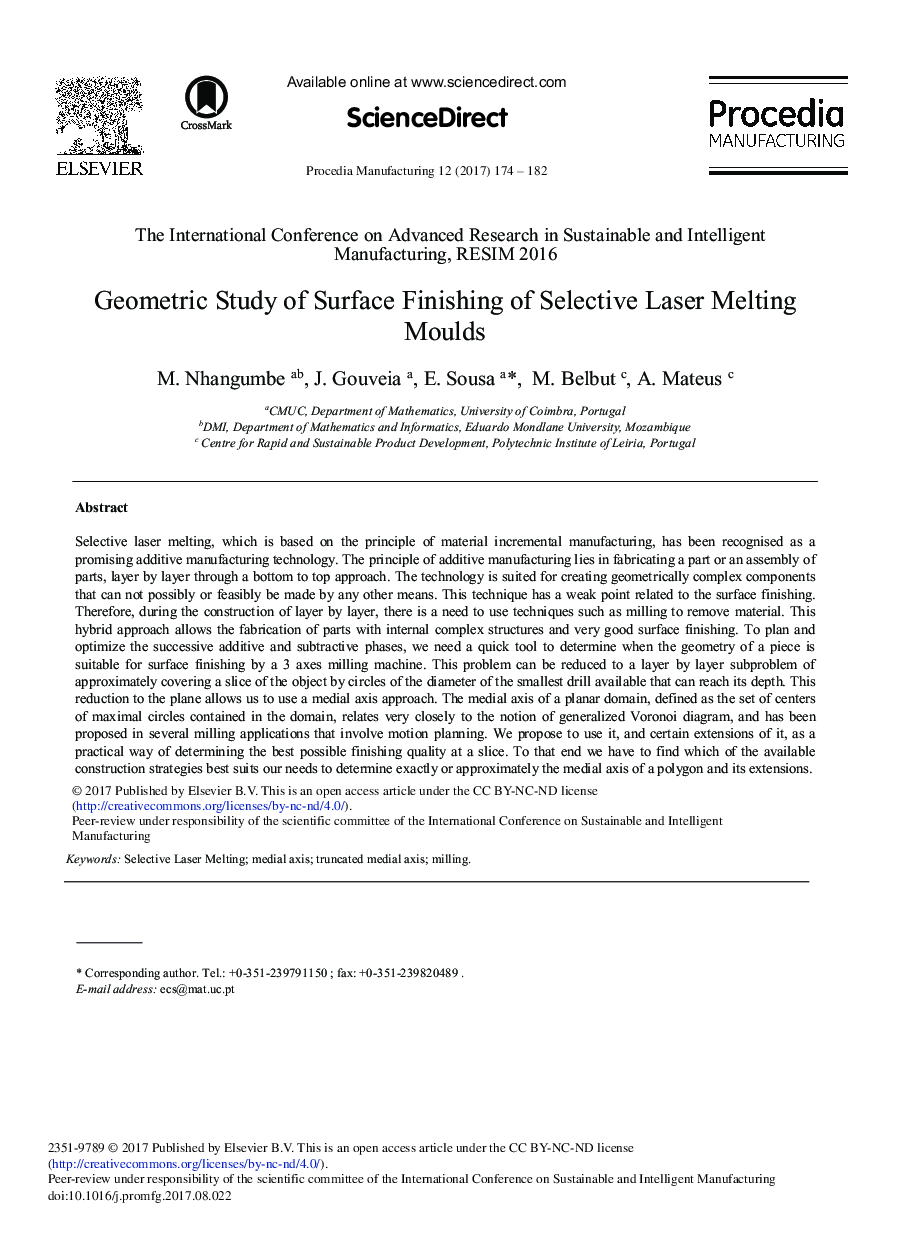| Article ID | Journal | Published Year | Pages | File Type |
|---|---|---|---|---|
| 5128625 | Procedia Manufacturing | 2017 | 9 Pages |
Selective laser melting, which is based on the principle of material incremental manufacturing, has been recognised as a promising additive manufacturing technology. The principle of additive manufacturing lies in fabricating a part or an assembly of parts, layer by layer through a bottom to top approach. The technology is suited for creating geometrically complex components that can not possibly or feasibly be made by any other means. This technique has a weak point related to the surface finishing. Therefore, during the construction of layer by layer, there is a need to use techniques such as milling to remove material. This hybrid approach allows the fabrication of parts with internal complex structures and very good surface finishing. To plan and optimize the successive additive and subtractive phases, we need a quick tool to determine when the geometry of a piece is suitable for surface finishing by a 3 axes milling machine. This problem can be reduced to a layer by layer subproblem of approximately covering a slice of the object by circles of the diameter of the smallest drill available that can reach its depth. This reduction to the plane allows us to use a medial axis approach. The medial axis of a planar domain, defined as the set of centers of maximal circles contained in the domain, relates very closely to the notion of generalized Voronoi diagram, and has been proposed in several milling applications that involve motion planning. We propose to use it, and certain extensions of it, as a practical way of determining the best possible finishing quality at a slice. To that end we have to find which of the available construction strategies best suits our needs to determine exactly or approximately the medial axis of a polygon and its extensions.
